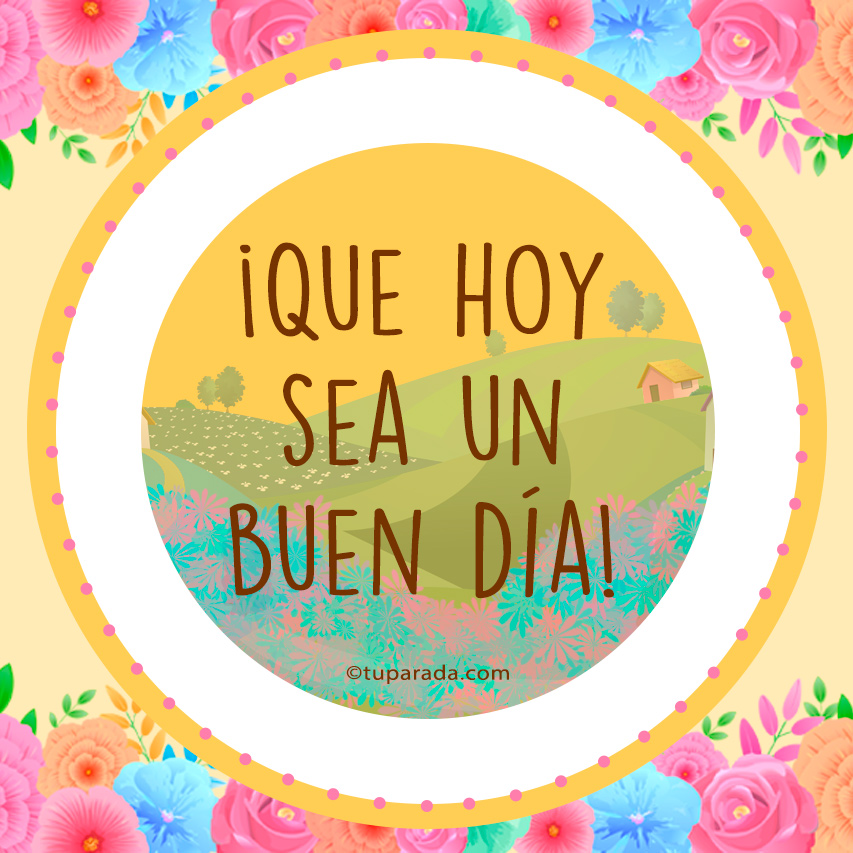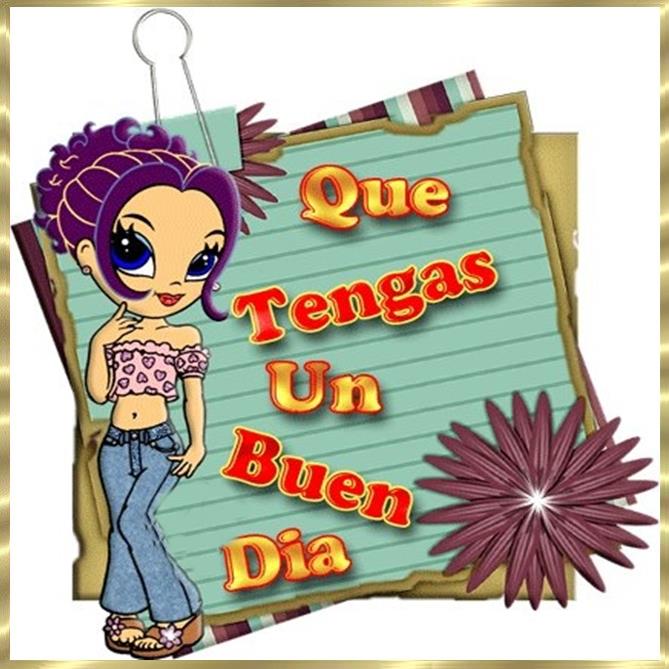
Que Tengas un Buen Dia Happy Day Quotes, Good Day Quotes, Morning
"Que tenga un buen día" (kay TEN-gah oon bwen DI-ah): If you're speaking to someone older than you or to an authority figure, try using the formal variation of "que tengas un buen día" instead. You may also see this form referred to as the "usted" form. Don't worry too much if you mess this up—Spanish speakers tend to use the formal register of the language far less than.

Que tengas buen dia Saludos de buenos dias, Buenos días saludos
Que tengas un buen día is a shortened version of an implied fuller expression: [espero] que tengas un buen día — [I hope] that you have a good day. With verbs like esperar, which carry uncertainty, we use a verb form called the subjunctive. Verbs like desear or querer could theoretically also precede " Que tengas un buen día":

Fondo de pantalla Que tengas un buen día
1. Que tengas un buen día, Que tenga un buen día. This is the most common way to say good morning in Spanish. Because the verb tener means "to have" in Spanish, this expression literally translates as "May you have a good day.". Another common variation is que tengas una buena dia, which omits the indefinite article un.

Que tengas un excelente dia desmotivaciones Imagui
By using phrases like 'Que tengas un buen día' or 'Deseo que tengas un día fantástico,' you can express your well wishes for someone's day to be filled with joy, success, and happiness. Whether you choose to say it in a simple or more elaborate way, the important thing is to show your sincere wishes for a positive and fulfilling.

Imágenes de buen dia Imágenes
¡Que tengas un buen dia! Hayley y Maider. Happy Hour Spanish. Hayley & Maider are co-founders of Happy Hour Spanish, an online Spanish Program utilizing original video content and local meetups for a true Spanish immersion experience. Together they speak English, Spanish, French, and Italian and have a passion for teaching and.

Buen Día, que tengas un día excepcional imagen 9219 Imágenes Cool
Maria: ¡Qué bien! ¡Te deseo que tengas un día productivo! Carlos: ¡Gracias, María! Igualmente. ¡Que tengas un día increíble! In this conversation, Carlos and Maria use a mix of formal and informal language based on their friendship level. Feel free to adapt these phrases to match your own conversations and personal style.

Pin on Día a Día
Os d eseo que tengáis un buen día en e l Señor. It's the way ho w to be clo ser to the Heaven. Que tengáis un buen día amig as! Have a nice day girls ! [.] pero cúrese antes su visión de túnel. [.] cu re the tu nnel vision.

Imágenes de que tengas un buen dia Imágenes
Yeah, well, have a nice day at school! Gracias de nuevo y que tengas un buen día. Thank you again and have a good day. Gracias por preguntar, que tengas un buen día. So thanks for asking, and have a good day. Torp, que tengas un buen día, y veámonos después de las elecciones. Torp, have a nice day, and let's meet after the elections.

Que hoy sea un buen día, tarjetas de Imágenes con frases
¡Que tengas un buen día también! Yes, Marta. Don't forget to study for the test! Have a good day too! Antoni is leaving his friend Jhon's house: Antoni: ¿Son las doce ya? Me tengo que ir. ¡Que tengas un buen día! Bueno, lo que queda. Is it noon already? I have to go. Have a good day! Well, what's left of it.

Que tengas un buen día TnRelaciones
Both 'buenos días' and 'buen día' can also be used as a way of saying goodbye to someone. This use is common to all Spanish speaking countries and you'll often hear 'Qué tengas (un) buen día' when leaving shops, etc. Vendedor - ¡Muchas gracias! Que tengas muy buen día. Cliente - ¡Igualmente! (we´ll get onto this one later)

Buenos Deseos para TI y para MÍ * Que tengas Buen Día
1. Que tengas un buen día. This is the most common way to say "have a good day" in Spanish. It is a friendly and polite expression that can be used in any situation. The verb "tener" means "to have", and "que" is a particle that introduces a wish or desire. Therefore, "que tengas un buen día" literally means "may you.

Imágenes de que tengas un buen dia Imágenes
Torp, que tengas un buen día, y veámonos después de las elecciones. Torp, have a nice day, and let's meet after the elections. Su corazón dejó de latir, que tengas un buen día. His heart stopped, now have a nice day. Cuídate y que tengas un buen día. Take care and have a nice day. Ok, bueno, que tengas un buen día.

FELIZ DÍA A LA VIDA Que tengas buen día
Que tengas un buen día, Que tenga un buen día. This is the most common way to say have a good day in Spanish.The verb tener means to have in Spanish, so this expression translates literally as may you have a good day.Another common variant is que tengas buen día, dropping the indefinite article un.. This expression can be used in a wide range of contexts, such as wishing a good day to a.

Que Tengas un Buen Dia
Que tengas un buen día. First let's talk about the most common way of saying have a good day in Spanish - Que tengas un buen día - which literally translates to "have a good day". This sentence is quite widespread throughout the Spanish-speaking world, so you will have no problem if you want to use it in Latin America or Spain.

349+ Imágenes de Buenos Días nuevas Página 28 de 35
¡Que tenga un buen día! ¡Que le vaya bien! Singular vs. Plural. If you're speaking to more than one person, you should use the following ustedes forms: ¡Que tengan un buen día! ¡Que les vaya bien! All About You. You is translated into Spanish in many different ways. Use the handy table below to help you decide which form you need to use.

Que tengas un gran día ! Buenos días saludos, Saludos de buenos dias
Que tengas buena fortuna : May you have good fortune: Neutral: Que tengas buena fortuna en el nuevo negocio. (May you have good fortune in your new business.) Que tengas un buen viaje : Have a good trip: Neutral: Que tengas un buen viaje. (Have a good trip.) Que tengas un buen día : Have a good day: Neutral: Que tengas un buen día en el trabajo.